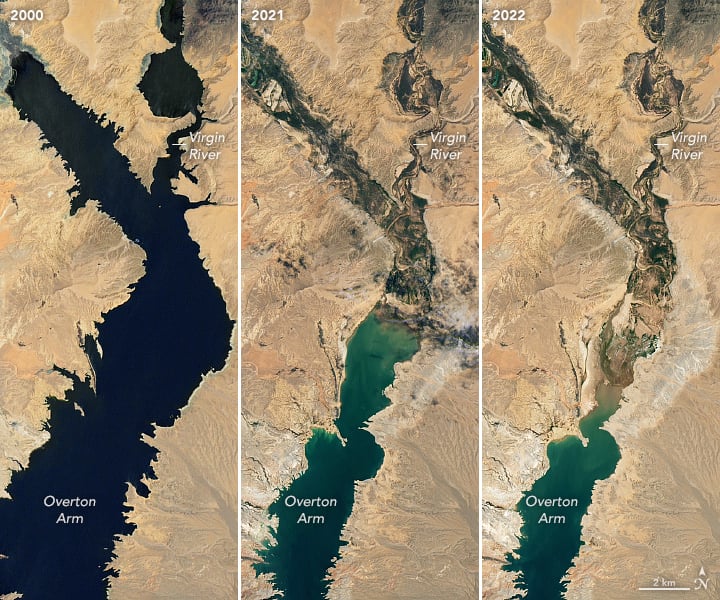
The 1,450-mile-long Colorado River and its tributaries snake through seven states and two nations — the US and Mexico. They provide water and electricity to about 40 million people in Arizona, California, Nevada, Colorado, New Mexico, Wyoming, and Utah. The country's sixth largest river also irrigates 4 to 5 million acres of farmland in the Southwest.
However, a prolonged 22-year drought has taken its toll on the mighty river. The Colorado River System as a whole is at 34 percent of its peak capacity in 2022, down from 40 percent last year. The water levels in the two main reservoirs — Lake Powell and Lake Mead — are currently at 27 percent and 25 percent capacity, respectively.

To prevent a catastrophic failure of the Colorado River System, the US Federal government declared the first-ever mandatory water cuts in 2021. The Tier 1 reductions required Arizona, Nevada, and Mexico to reduce their water usage by 18 percent, 7 percent, and 5 percent, respectively. The mandates were based on the assumption that the winter rain and snow would help replenish the critically low water levels. However, the precipitation was not enough to make up for the 22 years of drought.
In June 2022, the US Bureau of Reclamation (USBR), which manages the Colorado River Basin and is responsible for water allocation to states, declared a Tier 2 shortage. The officials are looking to cut annual water usage by 15 to 30 percent starting in 2023. However, instead of announcing mandatory cuts, they gave the seven Colorado River states 60 days, until mid-August, to devise a joint plan to reduce their water usage.

On August 16, 2022, USBR officials announced they had decided to extend the deadline to give the states more time to come to an agreement. Meanwhile, they will impose additional, previously arranged cuts on annual water usage for Arizona (21 percent), Nevada (8 percent), and Mexico (7 percent). The other states, including the largest water consumer — California — have avoided mandatory measures thus far. However, USBR officials warn that all seven states will face reductions if they don't develop a plan soon.
"As we have emphasized since taking office, the circumstances we face will require swift action and increased water conservation in every state, from every sector," said Tanya Trujillo, the Interior Department's Assistant Secretary for Water and Science.
Resources: Reuters.com, earthskyobservatory,nasa.gov, vox.com
